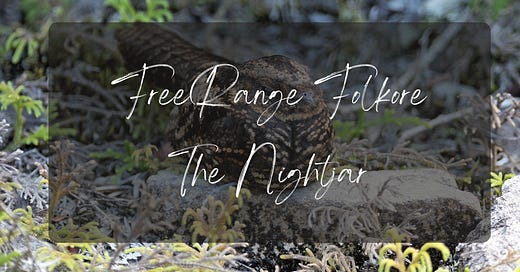The churring of nightjars is something I have wanted to hear in person for several years now and last night I got the opportunity to join two members of the South Downs National Park’s Heathlands Team, to take a walk around Ludshott Common and experience the call of this iconic bird.
It was the perfect evening for nightjars and they put on a wonderful display for us. I’ve put together a little video above for you which attempts to capture this churring. There are some stock images of the Nightjar in the video for those who haven’t seen one before and then the next part of the video is their call, which you may have to turn up the sound on, (don’t forget to turn the sound back down when you’ve finished listening).
So what about the folklore of this curious bird. Nightjars are ground nesters and they are crepuscular, meaning that they are most active for around two hours at dawn and dusk. Their favourite food is moths and flying insect, for example midges and these are often found around livestock.
Their feeding habits, ground dwelling nature and love of hanging around livestock lead to them gaining the nickname ‘Goatsucker’ as many folk believed they drank the milk of goats. Of course, the nightjar was far more interested in the flies.
Another name for them in Fern Owl and this is because of their colour and the perhaps the interesting kwik kwik noise they make as the take off. The sound is very similar to that of a female tawny owl although it’s much quieter and as the nightjar dwells in the gorse, fern and heather they became known as Fern Owls.
If you get the opportunity to go and listen to one of these little wonders I heartily recommend it and they are often present on the heathlands in Hampshire. They are a protected species so do ensure that you give them the space and respect they need to go about their crepuscular business whilst you enjoy their truly unique call.







Share this post